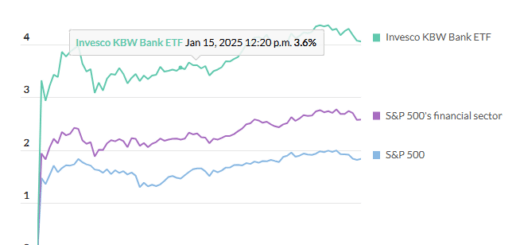Inflation’s Standstill: How Investors Can Adapt to Prolonged Economic Trends
One trader suggests that runaway inflation isn’t looming, but instead, there’s a risk of asset prices spiraling out of control. With the latest strong official jobs report for March now available, traders are bracing for five more months of stagnant consumer-price index (CPI) reports, expected to hover between 3.2% and 3.4%. Despite the Federal Reserve’s efforts to curb inflation, it’s anticipated that CPI figures will persist above 3% until August, shaping household expectations.
Gang Hu, a trader at WinShore Capital Partners, highlights that despite concerns about inflation not subsiding and the potential for further escalation, significant asset depreciation may not occur. Hu’s track record of accurate predictions adds credibility to his viewpoint, such as his past forecasts on inflation and market reactions.

Hu paints a picture where the U.S. economy and financial markets are entering a new phase of the inflation era, where asset prices could continue rising even if the Fed struggles to rein in inflation or lower interest rates. He attributes this to various factors, including the uneven impact of economic conditions on different businesses, substantial fiscal support from recent legislation, and increased immigration bolstering job creation.
The unexpectedly strong March jobs report has contributed to a positive market sentiment, despite lingering concerns about inflation. Even traders expecting continued CPI increases haven’t sounded the alarm about inflationary trends.
Hu underscores that fiscal policies are segregating winners and losers in the economy, with major technology firms likely to weather interest rate fluctuations well, while smaller companies and consumers face greater challenges. Additionally, the influx of immigrants into the labor force is easing pressure on job creation and economic growth.
Overall, Hu suggests that asset inflation may outpace consumer inflation in the U.S. economy. He speculates that as inflation remains around 3%, the Fed’s traditional economic models might prove less effective, leading to uncertainty about appropriate monetary policy measures.
While the first quarter ended positively for stock indexes, April’s start has been more volatile, with mixed performances across major indices and fluctuations in bond, gold, and oil markets.




